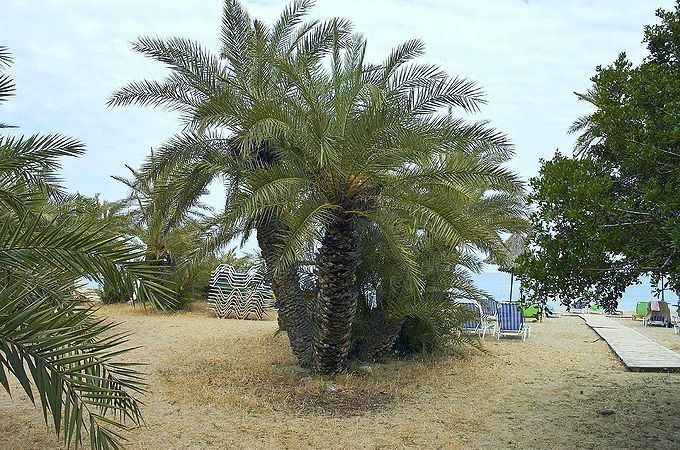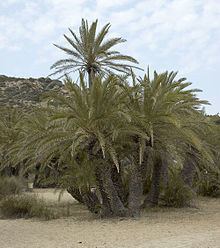Tribe Phoeniceae Rank Species | Subfamily Coryphoideae Genus Phoenix Higher classification Date palms | |
 | ||
Similar Palm trees, Date palms, Phoenix reclinata, Trachycarpus martianus, Trachycarpus takil | ||
Big plant nursery phoenix theophrasti cretan date palm
Phoenix theophrasti, the Cretan date palm, is a palm native to the eastern Mediterranean, with a very restricted distribution, confined to southern Greece, a few sites on Crete and nearby islands as well as some places on the Turkish coast. In Europe, with Chamaerops humilis (palm tree that grows in the Mediterranean) are the unique native palm trees in the continental Europe. In Turkey, it is the only native palm species; all the others—although much more common—were introduced.
Contents
- Big plant nursery phoenix theophrasti cretan date palm
- Visit to the plant micro reserve of phoenix theophrasti habitat type in western crete
- Description
- Distribution
- References

The specific epithet theophrasti was chosen by the Swiss botanist Werner Greuter in 1967 for the fact that Theophrastus, the ancient Greek ‘father of botany,’ had described several types of palms, including one from Crete.

Visit to the plant micro reserve of phoenix theophrasti habitat type in western crete
Description

Apart from the usually inedible dates and upright fruit clusters, the Cretan species can appear quite similar to the cultivated date (Phoenix dactylifera).

Phoenix theophrasti grows up to 15 m tall, usually with several slender stems. The leaves are pinnate, 2–3 m long, with numerous rigid greyish-green linear leaflets 15–50 cm long on each side of the central rachis. Dead leaves are marcescent, remaining attached to the stem for years after withering. The fruit is an oval yellowish-brown drupe 1.5 cm long and 1 cm diameter and containing a single large seed; the fruit pulp is too thin and fibrous to be of agricultural significance and has an acrid taste, though the fruits are sometimes eaten by the locals.
Distribution
Sites on Crete include Vai in the Lasithi Prefecture, Ayios Nikitas in Heraklion Prefecture, and Preveli gorge and Souda near Plakias, both on the south coasts of Crete in Rethymnon Prefecture. Trees are also found on Amorgos island, and the south coast of Anafi island. Recently, around 10 trees, the only natural stand on the mainland, were found in an ancient palm forest in the Epidaurus area in Peloponnese. It has been proposed that its range was much more widespread in ancient Greece, growing from Crete to Thebes, and from the Peloponnese to Delos.
Its presence in Turkey was not described scientifically until the 1980s. There are four stands in southwest Turkey, especially on the Datça and Bodrum Peninsulas in Muğla Province and in Kumluca-Karaöz in Finike Bay. The plants from a grove in the village of Gölköy in northern Bodrum are considered by some as a subspecies, having a shorter stem (4–8 m) but longer fruit stalks (.6–2 m).
Areas forested with Phoenix theophrasti, Phoenix canariensis and Chamaerops humilis constitute Europe's only palm forests.
